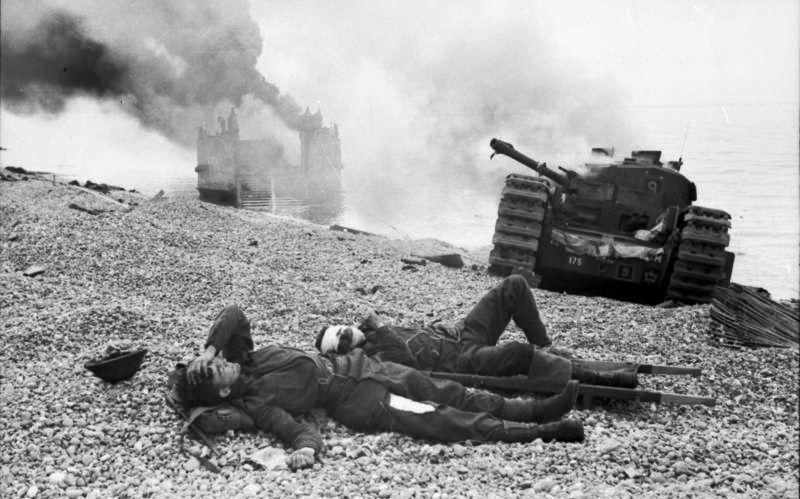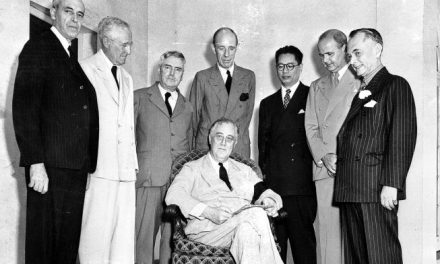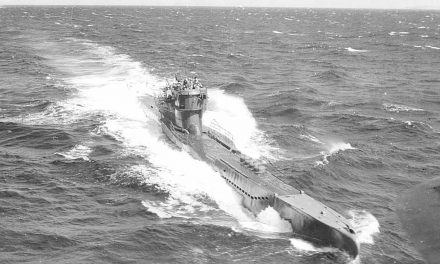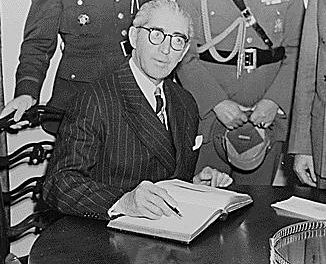Having been at war for almost a year, President Roosevelt, together with British leaders, faces a difficult decision: open a second battle front in Europe or send U.S. troops to Axis-occupied Africa?
“The coasts of Nazi-occupied Europe are bristling with defenses,” said veteran American diplomat James Gerard. “We have seen half the landing force at Dieppe wiped out in a few hours,” Gerard noted, referring to the disastrous Allied raid on the German-occupied port in Northern France. “But no such problem of invasion exists on the long coast of Africa.”
President Roosevelt and Britain’s Prime Minister Winston Churchill have met several times to discuss where to next deploy Allied troops.
One option is to open a second front to Europe in order to back up Russia against the bulk of the Axis powers. Sending more forces against the bulk of the German and Italian armies could cause a major setback for the Axis powers. Yet what happens if the Axis powers defeat the fresh wave of Allied troops? A loss of this scale would heavily damage any hope of an overall Allied victory for the war.
The more likely option is to send troops to Africa, in an attempt to interrupt Germany’s military plans. An Allied offensive is already active in Africa, with British forces under General Bernard Montgomery attacking Field Marshal Erwin Rommel’s Afrika Korps—a German force sent to hold the Italian colonies in Africa. After previously losing hold on the city of Alexandria in Egypt, the British have a chance to strike back if helped by U.S. forces.
“Landing of so-called American forces of liberation can be expected at any time in Africa,” claimed a radio spokesperson in Paris. “The Americans mean to strike a new blow against our African possessions.”
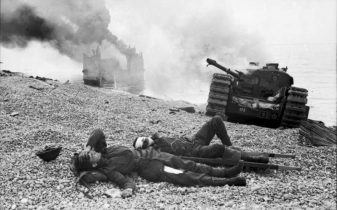
The disastrous Allied raid on Dieppe in August raises concerns about an invasion of Europe. Pictured here: wounded Canadian troops, an abandoned tank, and a burning landing craft on the beach at Dieppe. Photo from German Federal Archives/Wikimedia Commons: Bundesarchiv, Bild 101I-291-1205-14 / Koll / CC-BY-SA 3.0
The idea of American troops in Africa has the Axis powers scared. The Paris spokesman continued to say that the Axis powers were fighting an, “overwhelming, sometimes crushing, enemy numerical superiority.”
If the Allies get control of Dakar—a port city on the coast of West Africa—it would deprive the Germans of great positional superiority which gives Germany the ability to easily attack the Allied trans-African routes. But taking Dakar would be only a defensive measure. Extending up the northwestern coast of Africa toward Casablanca would split Rommel’s forces, stop Germany’s attempt at gaining full control of Africa, reestablish Allied control in the Mediterranean, and position the Allies within striking distance of Axis-occupied Europe.
At face value, the plan to send troops to Africa looks great. Why wouldn’t President Roosevelt want to cut off Hitler’s control of Africa and give the Allies a strategic position in the war? Yet a decision of this caliber requires a lot of thought. Not creating a second front to help Russia, and instead sending troops to Africa, may upset Stalin, who has asked the U.S. and Britain for help. And what happens if the Axis powers are able to defeat the American troops in Africa? Does that weaken the hold the Allies have on the southern part of the continent?
Questions like these make the uncertainty of the war’s outcome even scarier, because at this point, it is impossible to tell which decisions will end in defeat and which will end in victory. It looks as if sending troops to Africa is President Roosevelt’s current plan. The course of the war may hinge on whether or not the plan succeeds.
Sources:
The African Way? (1942, October 12). TIME, 40(15), 30-32.
Mackey, W. (1942, October 26). Africa Drive Shows Allied Supply Edge. The Washington Post, p. 2.
Second Front. (1942, October 5). The Irish Times, p. 3.
Axis Voices Fears Of Drive In Africa. (1942, October 13). New York Times, p. 2.
Allied Attack. (1942, October 25). New York Times, p. E1.
Nover, B. (1942, October 20). Winter Campaign . The Washington Post, p. 9.
Folliard, E. T. (1942, October 25). Allies Open New Offensive Against Rommel In Africa. The Washington Post, p. B1.
Place For 2nd Front Seen in North Africa. (1942, October 12). New York Times, p. 4.

